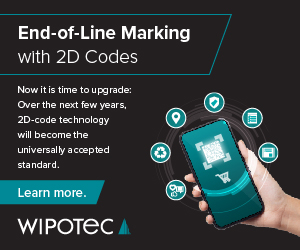Labels Offer Consumers a Virtual Product Experience
Compelling descriptive label content and dynamic graphics can present prospective buyers with a virtual, personal experience of the product before buying or using it.
Consumers can “smell” candles before buying them, “taste” a wine before consuming it, and “feel” the rejuvenating effects of an anti-aging cream before applying it. In addition to the immediate sensory experience, there’s the ability to evoke long-established emotions that will drive a sale—such as the joy of playing with a new toy.
For example, there’s a vodka that comes with a small, battery-powered “billboard” on the bottle. When powered up, it can stream a variety of messages like “Happy Birthday.” I received such a gift, and while the vodka is gone, the mini-billboard lives on, along with my fond memory of the product. If I come across it again, it will immediately stand out and likely prompt a sale…or two…or three.
A July 2018 Beveragedaily.com article speaks to this issue, noting “Beverage package designs aim to move, motivate and resonate with consumers on deeper levels; writes Tom Egan, vice president, industry services, PMMI, The Association for Packaging and Processing Technologies.”
It’s now about more than the immediate product allure (e.g., a food or beverage that tastes good). Packaging, including labels, increasingly is being called upon to serve as a powerful point-of-purchase sales tool.
What does this mean for product manufacturers as they look for new ways to stay competitive? Here are some tips:
- Elevate packaging/labeling in the hierarchy of importance. Hopefully, product manufacturers always will make the quality of the product itself the top priority. However, make sure that the entire process of creating and deploying packaging and labeling ranks right up there when it comes to evoking consumer responses and giving them a compelling “virtual experience” prior to purchase—something that makes their mouths water, their hearts beat faster, their eyes go wide open.
- Ask for input. This can range from conducting specific focus groups or information-gathering sessions about ideas and preferences to conducting a contest or crowdsourcing event to get input and feedback. For example, a company selling dark chocolate can identify new and compelling ways to intrigue and entrance consumers—then convey this information via label verbiage, look, and feel. Chocolate connections can include: a) communicating its timeless attraction, going back to childhood; b) providing “aromatherapy” via rich descriptions of wonderful smelling chocolate treats, baking, etc.; c) describing the mouth-watering experience of biting into a great-tasting piece of chocolate, savoring it in one’s mouth, then moving on to the next bite; d) visualizing it in the most dramatic and eye-popping way possible so that consumers will fixate on it.
- Makes sure product quality aligns with messaging. Once a look and feel is established, make sure it lines up completely with product allure. There’s nothing worse than painting a picture of a product that doesn’t line up with messaging and graphical claims. Using the same discernment as hopefully prevailed during the packaging/label process, really test out your product’s appeal. If it doesn’t match up, you’ll either need to change the product or the labeling/packaging campaign to match.
- Infuse package/label messaging and graphics in all marketing. Once there is proof that the labeling/packaging is a competitive plus, expand it throughout all company branding and messaging about the product. Report consumer reviews and results as warranted on social media, through traditional media, and on company communications channels. Make yourself all you can be, then let the rest of the world know about it.
Mark Lusky is president of Lusky Enterprises Inc., a marketing communications and content development company. Since 2008, he has worked with Lightning Labels, a Denver-based all-digital printing company specializing in custom labels and stickers, as a content developer offering expert advice articles. Lusky presents common-sense ideas grounded in doing what’s real and right for managing and enhancing public image.







